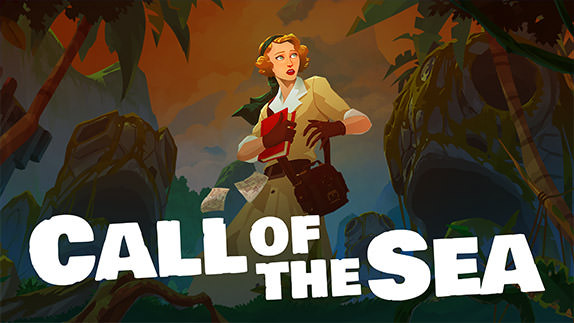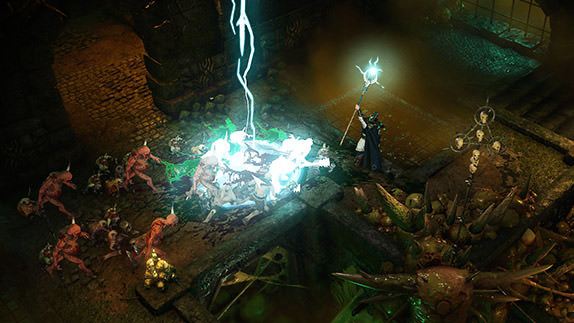Ninja Gaiden 3: Razor's Edge Review
 By Kevin Mitchell
Posted on April 17, 2013
By Kevin Mitchell
Posted on April 17, 2013
After a lackluster Ninja Gaiden 3 released to largely mixed reviews, Team Ninja has gone to great lengths to redesign and improve many of the issues fans and critics alike had with the original release.
As the master ninja Ryu Hayabusa, Razor’s Edge takes place after the events that transpired in Ninja Gaiden 2, as Ryu must travel the globe in order to stop a terrorist cult group calling themselves the Lords of Alchemy. Along with Mizuki, his partner from Japan’s Self-Defense Force (JSDF), Ryu heads to London to confront the leader of the cult known as the “Regent of the Mask.” Ryu’s right arm becomes cursed with the “Grip of Murder during the confrontation, which will kill him if he doesn’t spill the blood of countless foes. Trying to invoke emotions from the players, the narrative consistently reminds players of Ryu’s affliction, but isn’t compelling enough to move the narrative forward. Team Ninja is going to have to do a lot more to persuade players to care more about the narrative than slaughtering of hundreds of demons in each mission.
As a whole the combat feels fast-paced and stays true to the series’ arena style encounters that impede progress. Unlike the original release, Razor’s Edge features enhancements to the combat mechanics, as well as the return of the gruesome dismemberment of enemies. Similar to my experience with Sigma 2 Plus on the Vita, the various encounters range from fun to frustrating to almost rage quit worthy. Progressing through the missions, almost every single room will impede your forward progress as you must fight against waves of spawning enemies.
Ranged enemies wouldn’t be as aggravating if Ryu’s ranged weapons weren’t utterly fruitless and underpowered – the shurikens more so than the Ryu’s bow. The bow feels quite underpowered, especially during a terrible on-rails section, but is a necessity throughout the game to dispatch of the unreachable ranged foes that will constantly rain down rockets. Most melee foes will block any attempt to shoot not only arrows, but shurikens as well, further depreciating their use. Fights feel artificially padded with pointless additional spawns – some spawning literally right in front of you dragging out encounters.
A new addition to Ryu’s skills allows him to parry and counter attack foes, cutting them in half, literally. As soon as an enemy glows red, it is your cue to parry and follow up with the strong attack to instantly cut through enemies. If Ryu is positioned correctly he will begin a chain reaction taking out groups of enemies, as his only means of crowd control besides using Ninpo (magic) attacks.
QTEs now play a part in traversing the environments, given a God of War vibe to the game. From dodging missiles, sliding under crumbling platforms and gliding through the air and stabbing your blade directly through foes, Ryu definitely feels like a ninja. Most of the times, the game fails to show any sort of button prompt. By the end of the game, I gave up trying to figure out what button I was supposed to hit and ended up mashing all of them in an attempt to succeed. It works.
The presentation for Ninja Gaiden has always been strong and Razor’s Edge is no exception. Besides the aliasing around Ryu, his character model is detailed, especially with the grotesque nature of his right arm after becoming cursed. As a Team Ninja project, all the female characters in the game are well-endowed, but appear to “bug out” at times, resulting in some rather uncontrollable bouncing. Troy Baker – Booker DeWitt from BioShock Infinite – reprises his role as Ryu Hayabusa and has done a commendable job with the role for the past couple years.
The expanded online modes in Razor’s Edge features all of the previous DLC from the original Ninja Gaiden 3, as well as additional stages to compete in Clan Battles. The same ninja skill system from the single-player has transitioned over to multiplayer, requiring karma (essentially experience) to unlock additional weapons, outfits and skills. The multiplayer had a high difficulty curve, as those players with the high-end gear can kill low-level players with a single combo or powerful attack. Either blocking doesn’t work the same as it does in the single-player or players already know how to break through defenses. The cooperative Ninja Trails missions have been increased to 100 different ones, providing a deeper co-op experience allowing all four controllable characters to be used: Hayabusa, Ayane, Momiji and Kasumi.
Simply Put
While still rough around the edges – no pun intended – Razor’s Edge is a much more complete and enjoyable way to experience Ninja Gaiden 3. The inclusion of Challenge modes, a larger assortment of weapons (Lunar Staff get!) and new Ninpo attacks provide more substance to the original “dumbed down” version of the game. Even with the senseless padding of enemy encounters, Razor’s Edgecan be beaten in only a handful of hours. The difficulty has been increased to keep the game in line with the rest of the series, but the boss battles are quite discouraging.
Note: Ninja Gaiden 3: Razor's Edge was reviewed on PlayStation 3. A physical copy of the game was provided by the publisher/developer.




